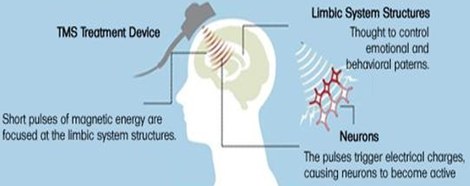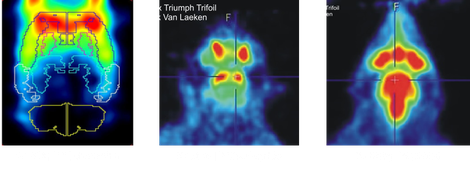The impact of accelerated High Frequency repetitive Transcranial Magnetic Stimulation (HF-rTMS) on the serotonergic and dopaminergic system in a rat model of depression
Accelerated HF-rTMS targeted to the DLPFC is a new therapeutic strategy that has shown to be successful in the treatment of major depression in humans. It makes use of an intensified rTMS protocol where both the number of pulses/session and the number of daily sessions have been drastically increased compared to conventional rTMS protocols. Hereby the treatment duration is shortened from several weeks to only four days and beneficial clinical results are obtained much faster. Despite its usefulness, up to now little is known about the basic molecular mechanisms that support these therapeutic effects.
By using the PET-radiotracers [18F]altanserin, [11C]raclopride and [11C]DASB, this study tries to investigate the impact of accelerated HF-rTMS on respectively the availability of the serotonin 5-HT2a receptor, the dopamine D2 receptor and the serotonin transporter in a rat model of depression. Imaging these neurotransmitter systems, which both play an important role in the pathology of depression, can make a substantial contribution to unravel the neurological mechanisms involved in (accelerated) HF-rTMS and to further optimize the stimulation protocol.
Researchers: Nick Van Laeken, Glenn Pauwelyn

